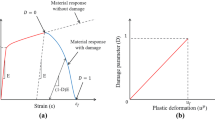Abstract
This paper uses analysis and high-speed photography to study the impact tolerance of cellular phones. Thin-walled clamshell case construction, which is currently favored for portable products due to its size and weight advantages, may not provide sufficient rigidity to impact-induced loads, which can cause the housing to separate when dropped. A simple method for increasing case rigidity—castellation of the housing interface to prevent slipping of the case halves—that can substantially improve the product's drop tolerance is presented. Implementation of variations of this technique in existing cellular phone designs allows the phones to surpass their drop survivability requirements. In addition, it is shown that the traditional construction method for cellular phone battery packs could lead to fracturing of the battery housing in a drop due to the multiple impacts that result. The authors describe a simple remedy—immobilization of the battery cells within the housing—that dramatically improves the battery pack's drop performance.
Similar content being viewed by others
References
Berins, M.L., Plastics Engineering Handbook of the Society of the Plastics Industry, Van Nostrand Reinhold, New York (1991).
Goyal, S., Papadopoulos, J.M., andSullivan, P.A., “The Dynamics of Clattering I: Equation of Motion and Examples,”J. Dyn. Sys. Meas. Control,120 (1),83–93 (1998).
Goyal, S., Papadopoulos, J.M., andSullivan, P.A., “The Dynamics of Clattering II: Global Results and Shock Protection,”J. Dyn. Sys. Meas. Control,120 (1),94–102 (1998).
Goyal, S., Papadopoulos, J.M., andSullivan, P.A., “Shock Protection of Portable Electronic Products: Shock Response Spectrum, Damage Boundary Approach, and Beyond,”Shock and Vibration,4 (3),169–191 (1997).
Goldsmith, W., The Theory and Physical Behaviour of Colliding Solids, Edward Arnold, London (1960).
Goyal, S., Pinson, E.N., andSinden, F.W., “Simulation of Dynamics of Interacting Rigid Bodies Including Friction I: General Problem and Contact Model,”Engineering with Computers,10,162–174 (1994).
Popov, E.P., Engineering Mechanics of Solids, Prentice Hall, Englewood Cliffs, NJ (1990).
Ayre, R.S., “Transient Response to Step & Pulse Functions,”Shock & Vibration Handbook, McGraw-Hill, New York, ch. 8 (1988).
Young, W.C., Roark's Formulas for Stress & Strain, McGraw-Hill, New York (1989).
Rivello, R.M., Theory and Analysis of Flight Structures, McGraw-Hill, New York (1969).
Author information
Authors and Affiliations
Rights and permissions
About this article
Cite this article
Goyal, S., Upasani, S. & Patel, D.M. Improving impact tolerance of portable electronic products: Case study of cellular phones. Experimental Mechanics 39, 43–52 (1999). https://doi.org/10.1007/BF02329300
Received:
Revised:
Issue Date:
DOI: https://doi.org/10.1007/BF02329300




